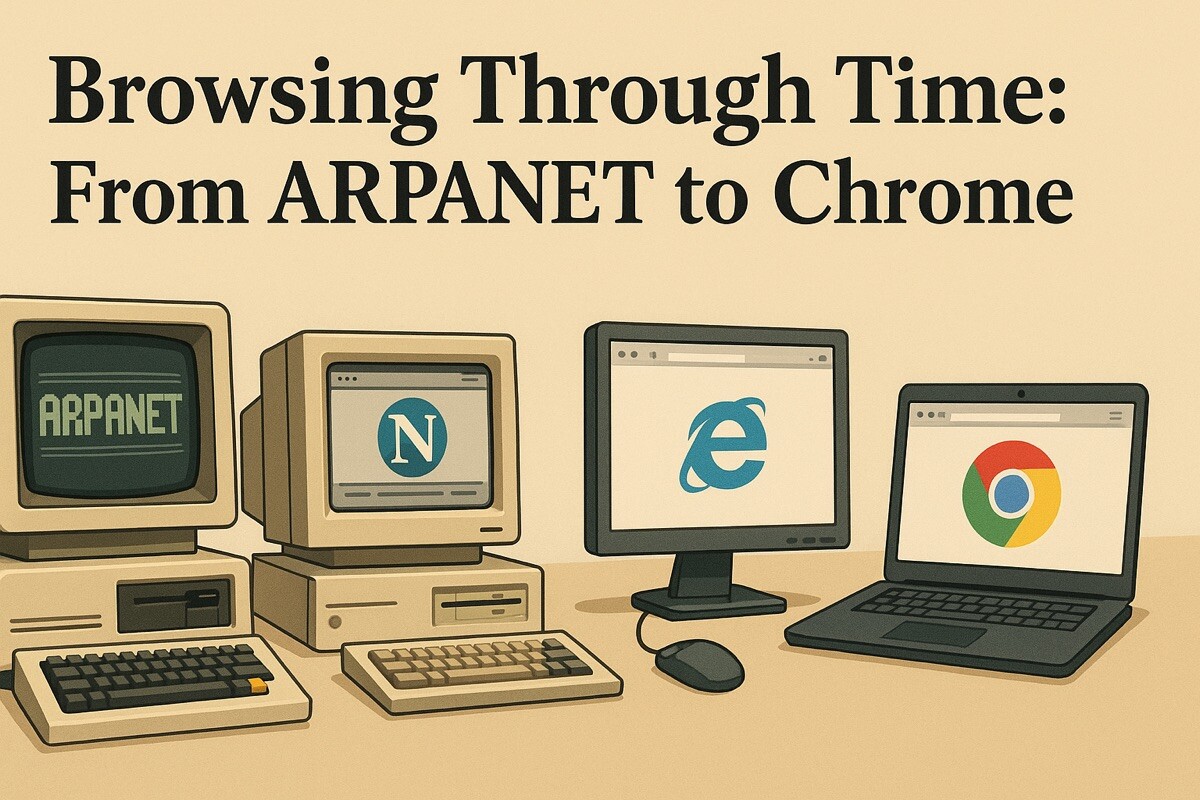
Browsing Through Time: From ARPANET to Chrome
The Early Days of Internet Browsers
It’s easy to take browsers for granted: they’ve been around as long as there’s been a World Wide Web. But before then, the Defense Department actually developed a predecessor the late ’60s, with a corralled network of universities mainframes, dubbed ARPANET, or the Advanced Research Projects Agency Network, that transmitted data to one another.
The Birth of the Internet
The first message on ARPANET — which over the next two decades would evolve into the present-day Internet — went live on October 29, 1969 when Charley Kline, a UCLA student programmer, sent out “login.” Well, actually, it was “lo” — his computer crashed before it finished sending, foreshadowing the plague of browser issues that would haunt us for years to come.
Evolution of Web Browsing
The turning point of the Internet happened in 1989, when British scientist and pioneer Tim Berners-Lee created the now-famous Hypertext Transfer Protocol, or HTTP, protocol. Two years later, in 1991, he introduced the first Web browser, which could translate and render HTML code into text and simple graphics in an easy-to-view format.
The Emergence of Mosaic and Netscape
He called his browser the “World Wide Web.” It opened a window into the vault of scientific information at Swiss research facility CERN. Browsers stayed in the bastion of academia for some time, connecting researchers to reams of text-based data.
I was in college in the early ’90s, and used another text-based forerunner, called Lynx, developed at the University of Kansas in 1992. While it didn’t render graphics like the Berners-Lee browser, it connected me to sites, not only to grab data, but to take part in a thriving community of newsgroups, bulletin boards and other Internet-based gathering spots.
The Rise of Internet Explorer
The next significant leap came with the ability to render complex images. Developed at the University of Illinois in 1993, Mosaic was the first browser to display text and images together, in a layout — a link at top and a window of content below — that’s still the interface of choice for today’s browsers.
But Mosaic, also the first browser to run relatively easily on Windows computers, was achingly slow due to slow Internet speeds at the time, so the team behind it — with Marc Andreessen, its leading architect — decided to make something better, and in 1993, they introduced Netscape Navigator.
The Browser Wars and the Reign of Internet Explorer
Navigator catered to the burgeoning “consumer” level of connectivity, working well with the 14.4-kilobits per second standard of dial-up modems. Another advancement was on-the-fly loading to speed up rendering. In fact, according to PCWorld, at Netscape’s height in 1996, three-in-four consumers went online using its products.
Of course, those good times came to an end when Microsoft entered the burgeoning browser wars. In 1995, Microsoft released Windows 95, packaged with Internet Explorer, or IE for short, giving consumers little reason to install third-party browsers like Netscape. By the third version of IE, in 1996, Microsoft had found its stride. It added features to support multimedia, add-ons like e-mail, as well as ActiveX support and Java applets for robust functionality.
The Reign of Firefox and the Advent of Chrome
But IE laid the groundwork for a Web that could now support media and streaming, as well as gaming and e-commerce. The innovations that Microsoft added into IE paved the way for the commercialization of the Internet, and the larger economy it would enable.
Those that didn’t want Microsoft looked for alternatives, and they found it when Firefox rose like a phoenix from the ashes of Navigator. Built by the open-source Mozilla Foundation in 2004, Firefox was considered a more secure alternative to IE, lauded for its quick response to critical vulnerabilities in its code.
The Dominance of Chrome
But the most influential browser today is arguably Chrome. Google, a relatively late entrant in the Internet, claimed for years it wasn’t interested in making a browser. But it relented and hired ex-Firefox employees to create the lightweight, minimalist browser that became Chrome.
Chrome wasn’t the first browser to feature separate tabs, allowing you to keep different sites open at once — that honor belongs to the obscure Internetworks company — but it did refine the simple and elegant layout, even featuring an “omnibox” so people could search its engine from the spot to enter a Web address.

